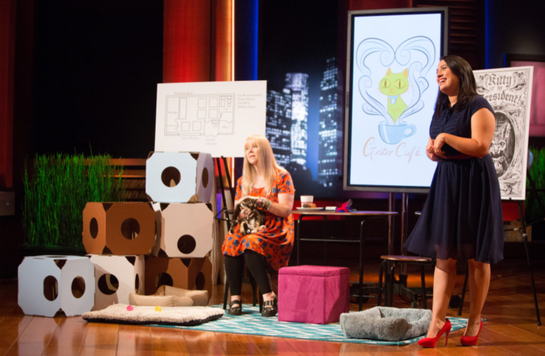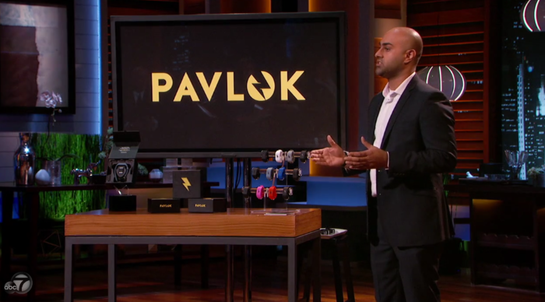How to Build Brand Recall in a Clickless World
Brand awareness is dwindling in organic search. Here's your strategy for building brand equity and recall by leveraging brand awareness. Learn more here.
Read More
Since 2009, thousands of business owners have appeared on Shark Tank to pitch “million dollar” ideas to the sharks, a group of investors who provide funding for a percentage ownership share of a company. Now a worldwide phenomenon, the show features inventors, entrepreneurs, and everyday people seeking funding for their direct-to-consumer (D2C) product or service.
While each episode may only feature a handful of segments, not every company gets funded, mostly due to a lack of business acumen or knowledge about the marketplace. Whether you want to expand or simply survive, many valuable marketing and business lessons can be learned from each presentation. Here are five noteworthy pitches and practical morals you’ll want to know in order to improve your next investment pitch or solidify your marketing strategy.
What do you get when you combine cats and coffee? A cat café, of course! Adriana Montano envisioned a place where people could sip on coffee and lattes while spending time with cats. Her experience working in a rescue shelter motivated her to save rescue cats from euthanasia. Inspired by the successful Japanese cat cafés, Adriana hoped to open Florida's first cat café and give rescue cats a chance for adoption.
Although she managed to convince the sharks that her idea would work, Adriana's pitch failed because she had no real plan — just a concept. When the sharks asked why they should invest, Adrianna couldn't give a good reason.
Image: Gazette Review
Business Takeaway: It's not enough to have a good idea; you have to prove your unique value with a comprehensive competitor analysis. On a high-stakes stage such as Shark Tank or any presentation environment, having a vague idea isn't enough. You need to know why your idea will thrive and stand the test of time.
In 2013, Jan Goetgeluk, CEO of Virtuix, appeared on Shark Tank to pitch the Virtuix Omni, an omnidirectional treadmill that’s designed to work with virtual reality gaming systems. It allows gamers to run, jump, and turn 360 degrees without falling or colliding with other players. After demonstrating the product’s capabilities, Goetgeluk asked the sharks, “Which of you wants to be at the forefront of the virtual reality revolution?”
Although the demo and pitch impressed them, the sharks ended up passing. Barbara Corcoran thought the platform was too bulky to place in homes or sales floors. Kevin O'Leary found the product appealing but thought Goetgeluk’s valuation of $20 million was a bit much. Although Mark Cuban thought the product was promising, he struggled to see its competitive advantage. As he explained to Goetgeluk, "You're just one more outlet competing for consumer dollars.”
Following the shark's rejection, however, Goetgeluk's company has grown wildly popular. As of 2019, Virtuix shipped more than 3,000 platforms throughout the world and has received $20+ million from investors (including Cuban, who eventually invested $3 million into the company).
Image: kirktaylor.com
Business Takeaway: Valuations don’t tell the whole story; in many cases, the proof is in the product. When asked to advise aspiring entrepreneurs about pitching to the sharks, Goetgeluk's says, "Don't get hung up on valuation…raise as much money as you can. You will not fail by raising too much money or by doing a deal with a shark. You may certainly fail by not doing so."
Sisters Donna and Rosy Khalife founded Surprise Ride, a monthly subscription service, to deliver monthly craft projects to kids. Surprise Ride's website states that its goal is to use these craft-inspired projects to "foster creativity in kids and expand their horizons." When they appeared on Shark Tank, the sisters asked the sharks for an investment of $110,000 in exchange for a 10% stake in Surprise Ride.
After several sharks declined, Robert Herjavec offered the sisters $110,000 in exchange for a 25% stake in Surprise Ride. When the sisters hesitated, however, he withdrew his offer. The sisters left the show disheartened at not having received a deal. Nevertheless, their appearance on Shark Tank provided public exposure that helped them reach more than $1 million in annual revenue.
In February 2016, the Donna and Rosy received an invitation to appear on Beyond the Tank, a show that provides updates on past Shark Tank guests. During the filming, the sisters received an unexpected call from O'Leary, who wanted to meet with them and make a second offer. He offered them $50,000 in exchange for a temporary 6% royalty and a 2% stake in the company. The sisters immediately accepted O'Leary's offer, no doubt lamenting their decision at hesitating on the previous offer. Following the sisters' deal with Kevin O'Leary, they’ve received many opportunities.
Image: The Next Web
Business Takeaway: Avoid taking rejection from investors personally. Sometimes, says Donna, investors reject your idea simply because they don't know your industry.
In 2015, Maneesh Sethi appeared on Shark Tank to ask the sharks for an investment of $14 million. He developed Pavlok, a wristband that used mild shocks to discourage bad habits such as biting nails. This triggered Cuban's suspicions, who asked whether Maneesh conducted any clinical studies. Herjavec also expressed doubt about the need for the device, reasoning that users could stop bad habits directly through self-discipline. Only O' Leary showed an interest in Pavlok, offering Maneesh $500,000 in exchange for 3.14% equity. Surprisingly, Maneesh refused the offer, stating that he would accept an offer from any shark other than O'Leary, due to his personality. In response, O'Leary cussed at Maneesh and ordered him to leave the show.
Image: tvovermind.com
Business Takeaway: People invest in other people, not a story or product. Maneesh's ego-driven personality instantly made him unpopular with many of the sharks. It's best to leave your ego at the door and avoid insulting investors by interrupting them or making snarky comments. Maneesh also failed to fully begin his pitch with his product's story or ultimate mission.
In 2013, brothers Richard and Albert Almini presented Rolodoc, a social media platform. Their goal was to improve communication between medical professionals and their patients. As doctors themselves, they wanted to bring "social media and the social network to the medical profession." They appeared on Shark Tank and requested a $50,000 investment in exchange for a 20% stake, but left without a deal.
Image: Business Insider
Business Takeaway: While the idea of Rolodoc had merit, there were many problems with the brothers' pitch. When Cuban asked the two brothers to describe how someone would use Rolodoc, their response was a confusing jumble of buzzwords. They failed to define their target audience or describe potential use cases. They also failed to communicate the story and mission behind their product. As a business owner or entrepreneur, focus on the why, what, and how of your product. Both in business and on Shark Tank, companies that can identify the mission or “big-picture” story behind their product are more likely to sell it.
Both entrepreneurs and businesspeople can learn many valuable business lessons from Shark Tank. It's definitely worth watching the sharks interact with entrepreneurs — it’s entertaining, but it’s also valuable for solid marketing and business advice. Taking note of their questions and responses to guests' ideas will help you learn how to build a company that will last for years to come.
Last updated on December 3rd, 2025.




